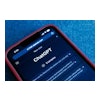‘Ghetto Fabulous’ Costume Party
Latest Racial Incident at University of Texas
AUSTIN, Texas
A group of first-year law students at the University of Texas at Austin have been chided by the dean for participating in a “Ghetto Fabulous”-themed costume party and posting the pictures online.
It’s the latest racially insensitive incident to emerge from the university, which has struggled for years to boost minority enrollment and make students of color feel welcome.
“Among the many ways to happily party in Austin, this particular one was singularly heedless and odious,” Dean Larry Sager said in an Oct. 6 e-mail to the law school’s student body.
Nick Transier, a first-year student who attended the party in September and posted pictures on his Web site, says nobody there meant to offend anyone of any race.
“We had no intention by any measure to choose a group or class of people and make fun of them,” says the 26-year-old Houston native.
But the photos, in which partygoers carried 40-ounce bottles of malt liquor and wore Afro wigs, necklaces with large medallions and name tags bearing stereotypically Black and Hispanic names, upset some Black law students, says Sophia Lecky, president of the Thurgood Marshall Legal Society.
“I just thought overall that it was kind of insensitive, that it was mocking a group of people or a class of people in just a real stereotypical or negative way,” she says. Lecky’s group aims to improve the academic and social climate for Black UT law students.
The group showed the pictures to Rey Ramos, the law school’s assistant dean for student affairs, who brought them to Sager’s attention.
Sager and Gregory Vincent, UT’s vice president for diversity and community engagement, met with about 18 students who were at the party. Sager says he is convinced the students didn’t think about what they were going to do and how it would make their classmates feel. No disciplinary action was planned.
“It’s understandable that students could innocently misbehave in this way, but it is indeed misbehavior,” he says.
About 70 of UT’s roughly 1,300 law students are Black, according to the university’s preliminary enrollment figures. There are about 800 White students, 225 Hispanic students, 75 Asian students, 55 foreign students and 75 who did not report an ethnicity.
Black enrollment plummeted after the 5th U.S. Circuit Court of Appeals ruled in 1996 in favor of Cheryl Hopwood and three other White applicants, who sued the UT law school after they were denied admission in favor of minority candidates. There were only 17 Black students enrolled in the fall of 1999, though that number has been steadily climbing.
The university as a whole also has had trouble with diversity and racial insensitivity.
Former UT President Larry Faulkner ordered sweeping changes in the university’s curriculum and culture in 2004 following a series of incidents that included the egging of the Martin Luther King Jr. statue and fraternity parties where Blacks were portrayed in Jim Crow-style racial stereotypes.
The university hired Vincent last year to improve diversity on campus. Last month, UT announced the appointment of an associate vice president who will work to diversify the faculty and staff.
Transier says he and other partygoers have met with members of the Thurgood Marshall Legal Society and apologized.
“In hindsight, is it something I won’t do again?” he says. “Yes. It’s one of those things that you learn from and move on.”
— Associated Press
© Copyright 2005 by DiverseEducation.com


















